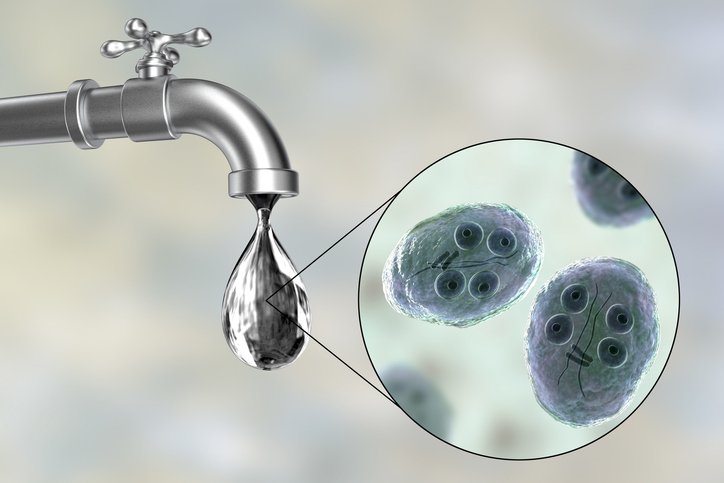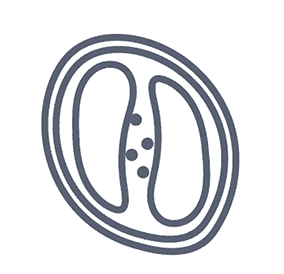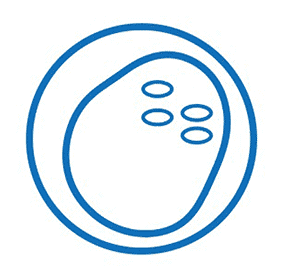Giardia: symptoms, prevention & treatment

Giardia symptoms
Symptoms of Giardia infection
Infections with Giardia are associated with chronic to severe diarrhea, sometimes accompanied by abdominal cramping, flatulence, nausea, vomiting, anorexia, fatigue, low-grade fever, and weight loss. [1]
In children, giardiasis can result in significant long-term growth retardation. Although infection usually results in acute or persistent diarrheal disease, in some instances the organism colonises the gut without causing symptoms and has been postulated protect against other forms of diarrheal disease. [2]
Acute infection generally develops over a period of three weeks with the most severe symptoms occurring at day eight post infection. Generally, infection is resolved within 2–3 weeks [3].
Giardia can be transmitted to humans via the ingestion of as few as 10 cysts. As a result, transmission has been linked to person to person contact in families, childcare facilities and is associated with poor hygienic practices. Foodborne transmission of Giardia can occur but is less frequent. Sexual transmission has also been reported among men who have sex with men. [2]
The benefits of employing molecular syndromic testing for overlapping gastrointestinal signs and symptoms
Genetic Signatures' EasyScreen Gastrointestinal Parasite Detection Kit can detect 8 parasite pathogens from a single sample, in a single test, increasing the likelihood of identifying co-infections from multiple parasites that might be missed with traditional testing methods. This is particularly important in cases where patients present with non-specific or overlapping symptoms that could be caused by a variety of gastrointestinal pathogens.
Preventing Giardia infection
Preventing Giardia infection primarily involves maintaining good hygiene, ensuring safe water consumption, and practicing safe food handling.
Thorough hand washing
Key hygiene practices include thorough handwashing with soap and water, especially before eating and after using the restroom, and using alcohol-based hand sanitizer when soap is unavailable. This is particularly important in settings such as day care/preschool or nursing homes.
Avoid untreated drinking water
Ensuring safe drinking water is critical; this can be achieved by boiling water, using certified water filters, or drinking bottled water, particularly in areas with uncertain water quality. When traveling, be cautious with local water sources and prefer bottled or treated water.
Wash raw fruits and vegetables
Proper washing of fruits and vegetables and avoiding food from questionable sources further reduces infection risk.
Avoid swallowing recreational water
Recreational water safety is also important; avoid swallowing water from natural bodies of water or poorly maintained pools, and ensure swimming pools are adequately chlorinated.
Good pet or animal hygiene
Routine handwashing after direct contact with pets, farm animals and animal environment is recommended. Prompt clean up of animal feces will also reduce risk of exposure.
Isolation from infected patients
Limit close contact with infected individuals, and isolate them where practical until they are no longer contagious.



Treatment for Giardia infection
There are a number of preferred therapies for Giardia infections. Antiprotozoals belonging to the family of 5-nitroimidazoles are currently the mainstay in the treatment of human giardiasis. [3]
Treatment challenge:
Treatment of gastrointestinal parasite infections is challenging due to parasite diversity and their specific treatment requirements, despite causing common symptoms (see table below). Misdiagnosis can lead to ineffective treatment. In addition, misuse or overuse of anti-parasitic drugs can lead to the development of antimicrobial resistance. Thus, timely and accurate detection of parasitic pathogens can support appropriate patient management and improve health outcomes.

Syndromic testing for 8 gastrointestinal parasites in a single test
Up to 60 patients screened in a single, automated workflow...with same day reporting!

Find out more about our unique 3base™ solution for detecting gastrointestinal parasites
References
- Li J, Wang Z, Karim MR, Zhang L. Detection of human intestinal protozoan parasites in vegetables and fruits: a review. Parasit Vectors. 2020 Jul 29;13(1):380. doi: 10.1186/s13071-020-04255-3. PMID: 32727529; PMCID: PMC7392835.
- Muhsen K, Levine MM. A systematic review and meta-analysis of the association between Giardia lamblia and endemic pediatric diarrhea in developing countries. Clin Infect Dis. 2012 Dec;55 Suppl 4(Suppl 4):S271-93. doi: 10.1093/cid/cis762. PMID: 23169940; PMCID: PMC3502312.
- Cernikova L, Faso C, Hehl AB. Five facts about Giardia lamblia. PLoS Pathog. 2018 Sep 27;14(9):e1007250. doi: 10.1371/journal.ppat.1007250. PMID: 30261050; PMCID: PMC6160191.







